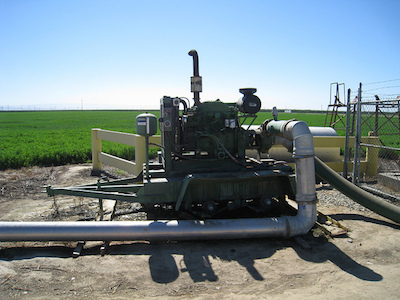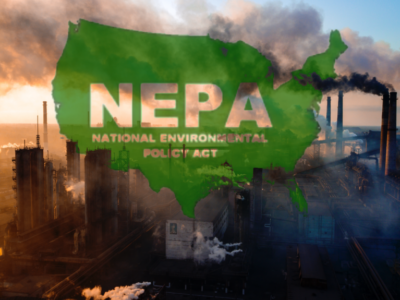California’s New Groundwater Law: An Interactive Timeline
What are the major deadlines for local groundwater management agencies, and when can—or must—state agencies act?
Many (including Legal Planet’s own Rick Frank) have examined the pros and cons of California’s new locally-focused groundwater management law. Such analyses will continue to be critically important as state and local players move forward with the nitty-gritty of actual implementation, and the legislation’s practical, on-the-ground (and under-the-ground) implications become clearer.
In this post, however, my goal is to simply lay out the relationships between the many dates and deadlines embedded in the law. Together, Senate Bill 1168, Assembly Bill 1739, and Senate Bill 1319 impose mandates for sustainable groundwater management on local agencies in high- and medium-priority groundwater basins. While the legislation puts most of the burden—and the power—in the hands of locals, it also establishes roles for two state agencies: the Department of Water Resources (DWR) and the State Water Resources Control Board (SWRCB).
The timeline above shows three categories of dates and deadlines displayed in separate, stacked bands: (1) the upper band shows the major deadlines by which DWR must act; (2) the middle band shows the major deadlines that apply to local agencies; and (3) the lower band shows the dates after which SWRCB could potentially intervene to address local management deficiencies.
The timeline is interactive: You can zoom in or out or return to the first slide using the icons on the left, you can scroll along the timeline and click on individual events to learn more, or you can step through the events in order using the arrows on either side (or the arrow keys on your keyboard).
A brief summary of each of the three categories of dates and deadlines follows.
1. Major Deadlines for Action by the Department of Water Resources (DWR)

The new groundwater law relies on DWR to jumpstart local groundwater management efforts by laying ground rules and providing information. First DWR will set the stage by identifying which groundwater basins have to be managed. By January 31, 2015, it will establish the initial priority—high, medium, low, or very low—for each groundwater basin in the state. Only high- and medium-priority basins will be subject to sustainable groundwater management mandates. If DWR later elevates a low- or very-low-priority basin to “medium” or “high” priority, that basin will have to establish a groundwater sustainability agency within two years and adopt a groundwater sustainability plan within five. (Water Code § 10722.4). Although DWR already prioritizes groundwater basins, the legislation adds a new consideration (“adverse impacts on local habitat and local streamflow”) for DWR to take into account. (Water Code § 10933(b)(8)).
Next, DWR must develop two sets of emergency regulations to govern how DWR and local groundwater agencies interact. Since the legislation allows local agencies to request basin-boundary revisions, it tasks DWR with adopting regulations that detail the substance and process of boundary review by January 1, 2016. (Water Code § 10722.2). Additionally, by June 1, 2016, DWR must adopt regulations for evaluating groundwater sustainability plans, their implementation, and coordination agreements between local agencies for groundwater sustainability planning. (Water Code § 10733.2).
By December 31, 2016, DWR must publish its best estimate of how much water is available for groundwater replenishment “in the state.” By the following day, January 1, 2017, DWR has to publish best management practices for sustainable groundwater management.
These deadlines are all front-loaded, with DWR’s actions occurring before deadlines for local agency action come due, but the legislation imposes other deadlines on DWR that are keyed to specific local agency actions instead of to absolute dates. For example, DWR must evaluate and issue an assessment of each groundwater sustainability plan within 2 years of the date a local agency submits it, then review plans and plan alternatives (see below) at least every five years. (Water Code §§ 10733.4(d), 10733.8).
2. Major Deadlines that Apply to Local Agencies
The deadlines for local agencies’ actions begin on the same date DWR’s date-linked deadlines end.
First, if a local agency intends to use an alternative to a groundwater sustainability plan, it must submit that alternative to DWR by January 1, 2017, as well as every five years thereafter. (Water Code § 10733.6)
Second, if DWR has not approved an alternative (and one is not pending approval), each high- or medium-priority basin must have identified / formed a groundwater sustainability agency by June 30, 2017. (Water Code §§ 10724, 10735.2(a)(1)). Any groundwater extractions that take place in parts of basins that lie outside these agencies’ management areas must be reported directly to SWRCB starting on July 1, 2017. (Water Code §§ 5202, 10724)
The next group of deadlines marks when high- and medium-priority basins must be managed under groundwater sustainability plans. Basins designated as having critical conditions of overdraft must be managed under groundwater sustainability plans by January 31, 2020. (Water Code § 10720.7(a)(1)). For all remaining high- and medium-priority basins, the deadline comes two years later, on January 31, 2022. (Water Code § 10720.7(a)(2)). Subsequently, groundwater sustainability agencies have to submit annual reports to DWR. The reports must include information about groundwater elevation, (aggregated) groundwater extraction, use and availability of surface water for recharge or in-lieu use, total water use, and the change in groundwater storage. (Water Code § 10728)
Within twenty years of the date a groundwater sustainability plan is implemented, a basin is supposed to achieve sustainability (operating within the basin’s sustainable yield). (Water Code § 10727.2(b)). However, DWR can give up to two five-year extensions on meeting this goal. (Water Code § 10727.2(b)(3)).
3. Dates After Which the State Water Resources Control Board (SWRCB) Could Intervene in Local Groundwater Management
In contrast with the hard deadlines it sets for DWR and local-agency action, the legislation identifies a series of dates and other threshold requirements that must be met before SWRCB may—but is not required to—intervene to address deficiencies in local groundwater management.
There are two main stages of intervention possible: probation and interim planning/management.
First, SWRCB can assign probationary status to a basin that has (1) missed a deadline (e.g., to form a groundwater sustainability agency, submit an alternative, or adopt a groundwater sustainability plan), (2) developed an inadequate groundwater sustainability plan, or (3) implemented a plan inadequately. The legislation includes different dates/thresholds for different types of probation (I refer to them in the timeline as Types A–F for ease of identification) that generally correspond with the passage of a local agency deadline. For example, the earliest possible date SWRCB can put a basin on probation is June 30, 2017 (e.g., if the basin lacks a groundwater sustainability agency (what I refer to in the timeline as Type A probation)). However, SWRCB can’t put a basin in which groundwater extractions result in significant depletions of interconnected surface waters on probation for inadequate planning or implementation (Type F probation) until January 31, 2025, at the earliest. (Water Code § 10735.2). Beginning ninety days after SWRCB puts a basin on probation, all groundwater extractions must be reported directly to SWRCB. (Water Code §§ 5202).
The second stage of intervention occurs if SWRCB decides to develop an interim plan for a basin it has placed on probation, often after a substantial waiting period that allows the applicable groundwater sustainability agency time to address the problem. (Water Code §§ 10735.4, 10735.6, 10735.8).
What do these dates and deadlines tell us?
We can draw many inferences from the above dates and deadlines and how they interact with one another. Most obviously (and as many others have noted), the legislation is not a quick fix for California’s groundwater woes. Even if every high- and medium-priority groundwater basin meets every deadline, every groundwater sustainability plan is adequate, and each is implemented appropriately, we would not expect to achieve sustainable groundwater management (basins operating at sustainable yield) for at least a quarter of a century. Longer if we factor in DWR’s ability to give up to two five-year extensions on that deadline.
Beyond this straightforward look at the timeline for implementing California’s new groundwater law, there are many other levels on which we can analyze the legislation and its impacts. We plan to do so. Stay tuned for more…
Reader Comments
One Reply to “California’s New Groundwater Law: An Interactive Timeline”
Comments are closed.






These counties and basins and water districts should have managed their groundwater or sought adjudication before. If they had this legislation would not be necessary. Funny, the law doesn’t apply to basins which have already been adjudicated. In the Central Basin of LA the adjudication actually is not sustainable in that it maintains an overdrawn aquifer to below sea level. It compensates with barrier injection wells which keep the sea water from intruding anymore.